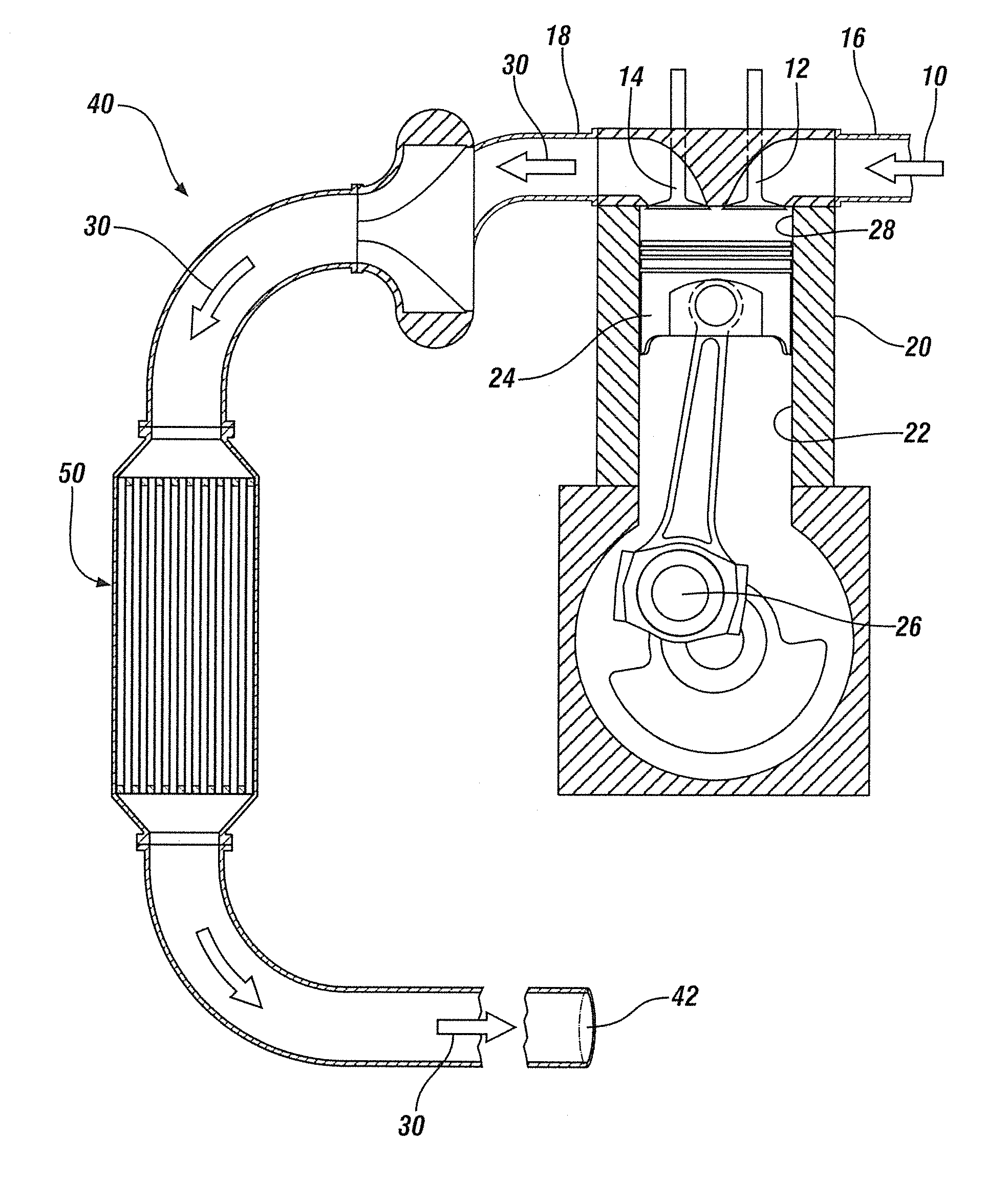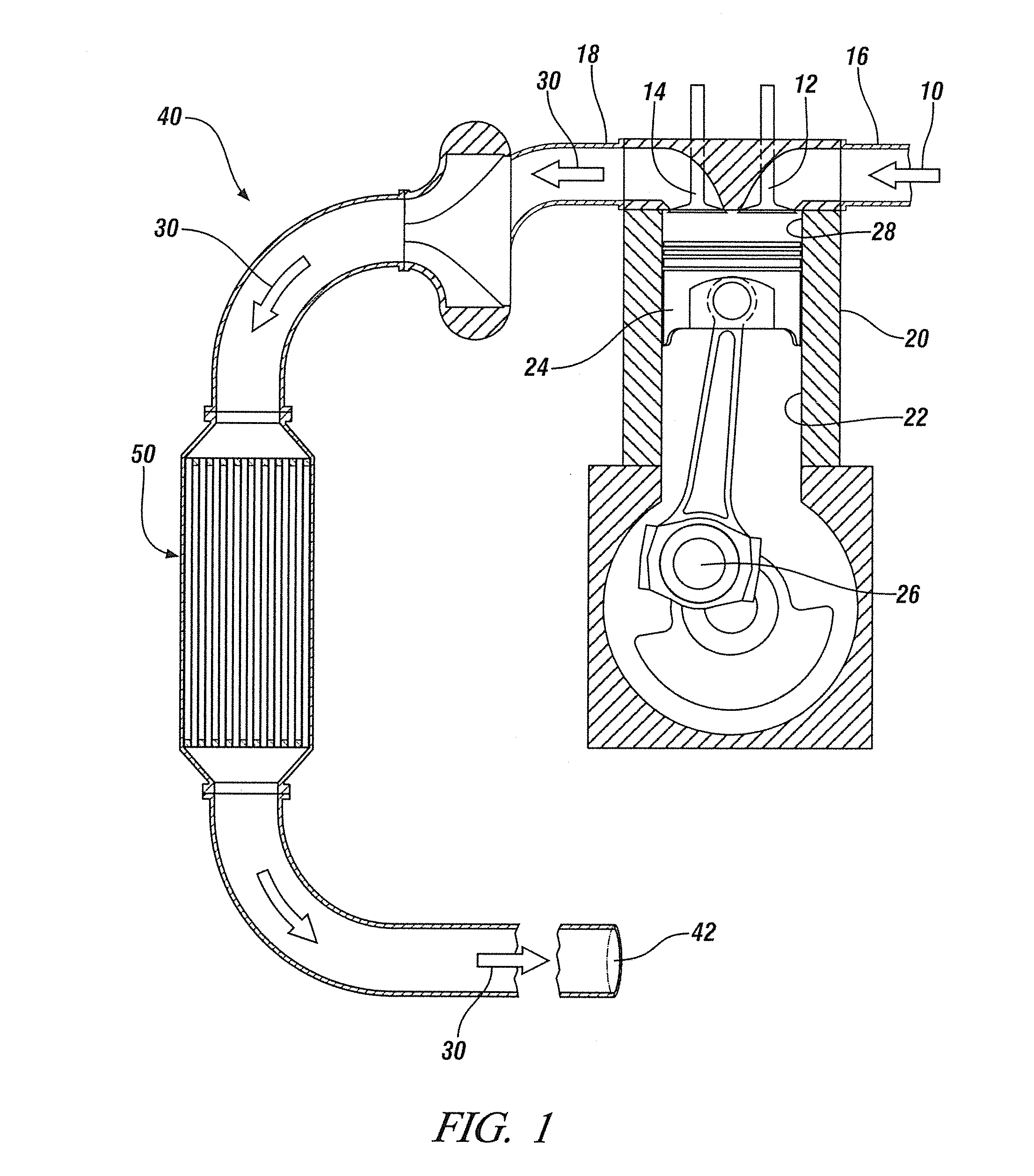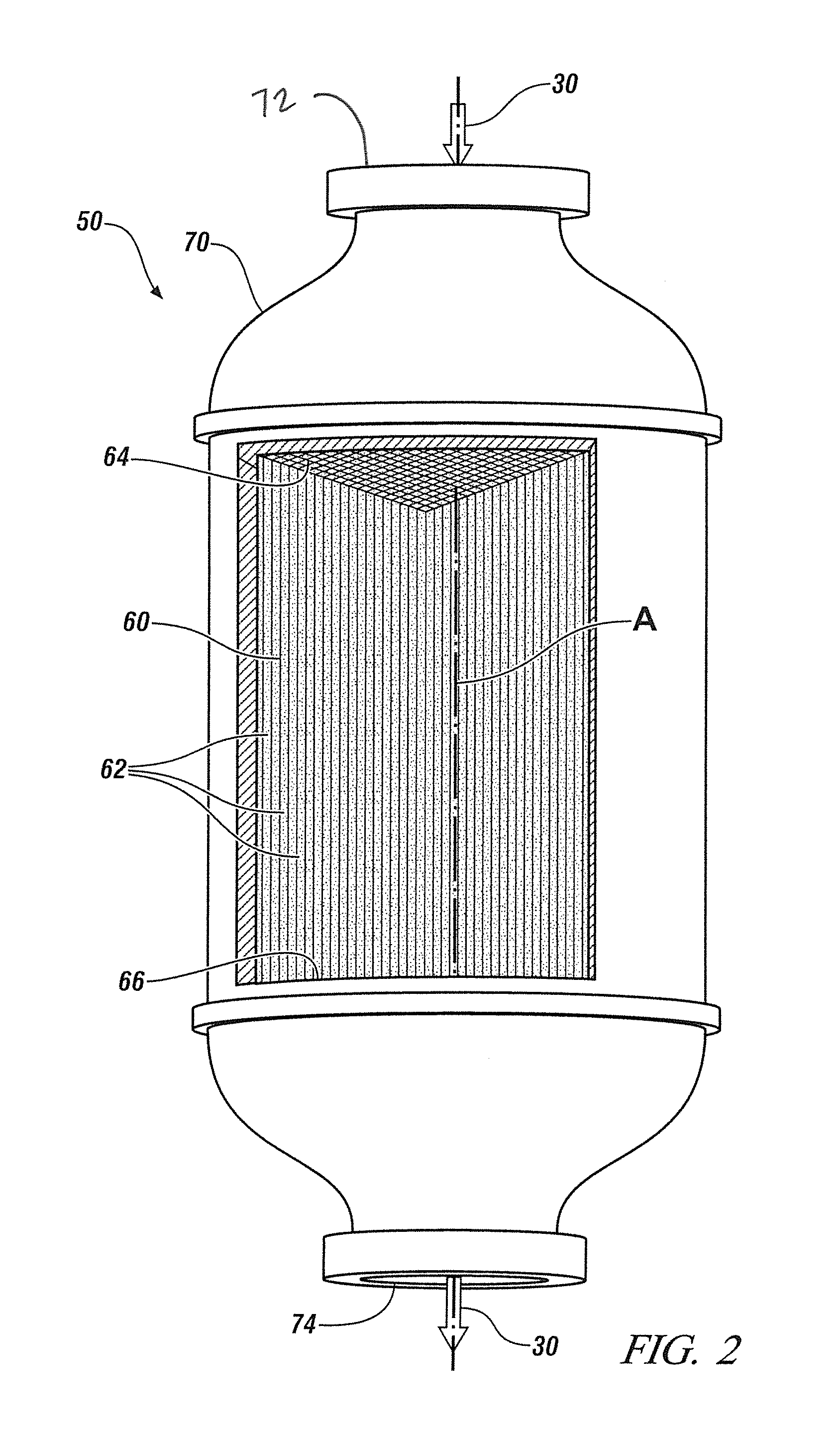Mn, Ce and Zr MIXED OXIDES OXIDATION CATALYST
a mixed oxide and catalyst technology, applied in metal/metal-oxide/metal-hydroxide catalysts, combustible gas purification/modification, arsenic compounds, etc., can solve the problem of inhibiting catalytic reduction, increase the resistance to such sulfur poisoning, and inhibit the no oxidation activity of such compounds. , the effect of reducing the exhaust gas environmen
- Summary
- Abstract
- Description
- Claims
- Application Information
AI Technical Summary
Benefits of technology
Problems solved by technology
Method used
Image
Examples
example 1
[0038]In this example, the NO oxidation activity of the Mn(0.3)CeZrOX catalyst and the Mn(0.3)CeOX catalyst is determined at various catalyst temperatures. Before the NO oxidation activity of the freshly-prepared catalysts is measured, the catalyst-coated monoliths are “degreened,” or aged. In this step, the reactor is heated to about 750° C. and a gas mixture comprising 10 vol. % H2O and air is fed to the reactor for 1 hour.
[0039]To determine the NO oxidation activity of the catalysts at various temperatures, a gas stream comprising 8 vol. % O2, 5 vol. % H2O, 8 vol. % CO2 and 200 ppmv NO with N2 as balance is fed to the reactor and the temperature of the gas feed stream is incrementally increased from 100° C. to 450° C. As stated, the gas stream from the reactor outlet is analyzed with an FTIR. The percent NO to NO2 conversion values are calculated by comparing the concentration of NO and NO2 in the gas stream at both the inlet ([NO]inlet) and the outlet ([NO]outlet) of the reactor...
example 2
[0041]In this example, the oxidation catalysts of Mn(0.3)CeZrOX and Mn(0.3)CeOX are prepared as above and used to promote the oxidation of NO and NO2 in a gas stream. But, in this example, the sulfur tolerance of the catalysts is determined by exposing the catalysts to a gas stream containing a high-concentration of SO2 (32 ppmv).
[0042]The exhaust gas from a diesel or gasoline-fueled engine typically contains only 1-2 ppmv SO2. Therefore, this example is not representative of the actual NO to NO2 oxidation performance that either of these catalysts would likely exhibit if continuously exposed to an SO2-containing exhaust gas from a diesel or gasoline-fueled vehicle. In general, it is expected that both of these oxidation catalysts will perform quite well when exposed to the particularly low amounts of SO2 that are usually present in the exhaust gas from a diesel or gasoline-fueled. However, some engines burn alternative fuels, such as coal, and such fuels may contain much higher amo...
example 3
[0046]After the Mn(0.3)CeZrOX oxidation catalyst is exposed to an SO2-containing gas steam, as in Example 2, the catalyst may be regenerated by heating the catalyst to about 550° C. and briefly exposing the catalyst to a gas stream comprising 1 vol. % H2 so as to produce a reducing environment in the gas stream. During regeneration, the gas stream did not contain O2.
[0047]After regeneration, the NO to NO2 oxidation activity of the Mn(0.3)CeZrOX catalyst is evaluated in a gas stream comprising 8 vol. % O2, 5 vol. % H2O, 8 vol. % CO2 and 200 ppmv NO with N2 as balance. The regenerated Mn(0.3)CeZrOX oxidation catalyst is able to convert approximately 50% of NO present in the gas feed stream to NO2.
[0048]The sulfur tolerance and regeneration ability of the Mn(0.3)CeZrOX catalyst suggest that this catalyst may also be used to effectively oxidize CO, HC and NOX in exhaust gas treatment systems for engines that burn alternative fuels, which may or may not contain high amounts of sulfur. Fo...
PUM
| Property | Measurement | Unit |
|---|---|---|
| molar ratio | aaaaa | aaaaa |
| molar ratio | aaaaa | aaaaa |
| molar ratio | aaaaa | aaaaa |
Abstract
Description
Claims
Application Information
 Login to View More
Login to View More - R&D
- Intellectual Property
- Life Sciences
- Materials
- Tech Scout
- Unparalleled Data Quality
- Higher Quality Content
- 60% Fewer Hallucinations
Browse by: Latest US Patents, China's latest patents, Technical Efficacy Thesaurus, Application Domain, Technology Topic, Popular Technical Reports.
© 2025 PatSnap. All rights reserved.Legal|Privacy policy|Modern Slavery Act Transparency Statement|Sitemap|About US| Contact US: help@patsnap.com



